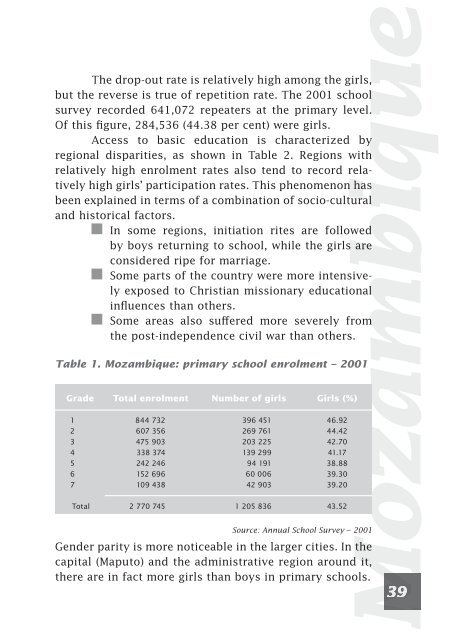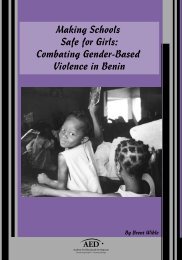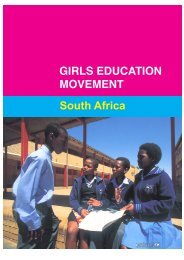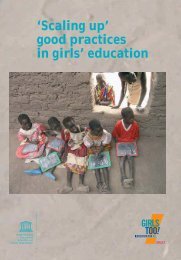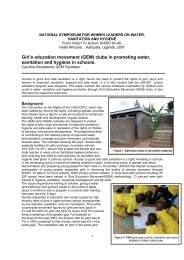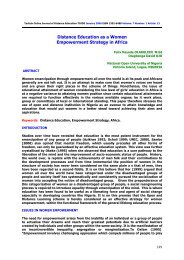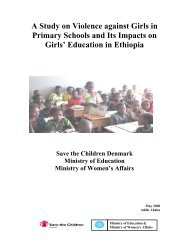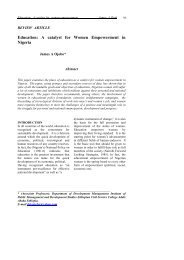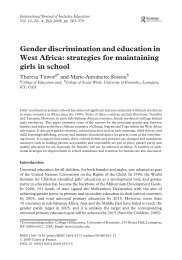Promoting basic education for women and girls ... - library.unesco-ii...
Promoting basic education for women and girls ... - library.unesco-ii...
Promoting basic education for women and girls ... - library.unesco-ii...
Create successful ePaper yourself
Turn your PDF publications into a flip-book with our unique Google optimized e-Paper software.
M39<br />
M<br />
The drop-out rate is relatively high among the <strong>girls</strong>,<br />
but the reverse is true of repetition rate. The 2001 school<br />
survey recorded 641,072 repeaters at the primary level.<br />
Of this figure, 284,536 (44.38 per cent) were <strong>girls</strong>.<br />
Access to <strong>basic</strong> <strong>education</strong> is characterized by<br />
regional disparities, as shown in Table 2. Regions with<br />
relatively high enrolment rates also tend to record relatively<br />
high <strong>girls</strong>’ participation rates. This phenomenon has<br />
been explained in terms of a combination of socio-cultural<br />
<strong>and</strong> historical factors.<br />
In some regions, initiation rites are followed<br />
by boys returning to school, while the <strong>girls</strong> are<br />
considered ripe <strong>for</strong> marriage.<br />
Some parts of the country were more intensively<br />
exposed to Christian missionary <strong>education</strong>al<br />
influences than others.<br />
Some areas also suffered more severely from<br />
the post-independence civil war than others.<br />
Table 1. Mozambique: primary school enrolment – 2001<br />
Grade<br />
1<br />
2<br />
3<br />
4<br />
5<br />
6<br />
7<br />
Total<br />
Total enrolment<br />
844 732<br />
607 356<br />
475 903<br />
338 374<br />
242 246<br />
152 696<br />
109 438<br />
2 770 745<br />
Number of <strong>girls</strong><br />
396 451<br />
269 761<br />
203 225<br />
139 299<br />
94 191<br />
60 006<br />
42 903<br />
1 205 836<br />
Mozambique<br />
Girls (%)<br />
46.92<br />
44.42<br />
42.70<br />
41.17<br />
38.88<br />
39.30<br />
39.20<br />
43.52<br />
Source: Annual School Survey – 2001<br />
Gender parity is more noticeable in the larger cities. In the<br />
capital (Maputo) <strong>and</strong> the administrative region around it,<br />
there are in fact more <strong>girls</strong> than boys in primary schools.


